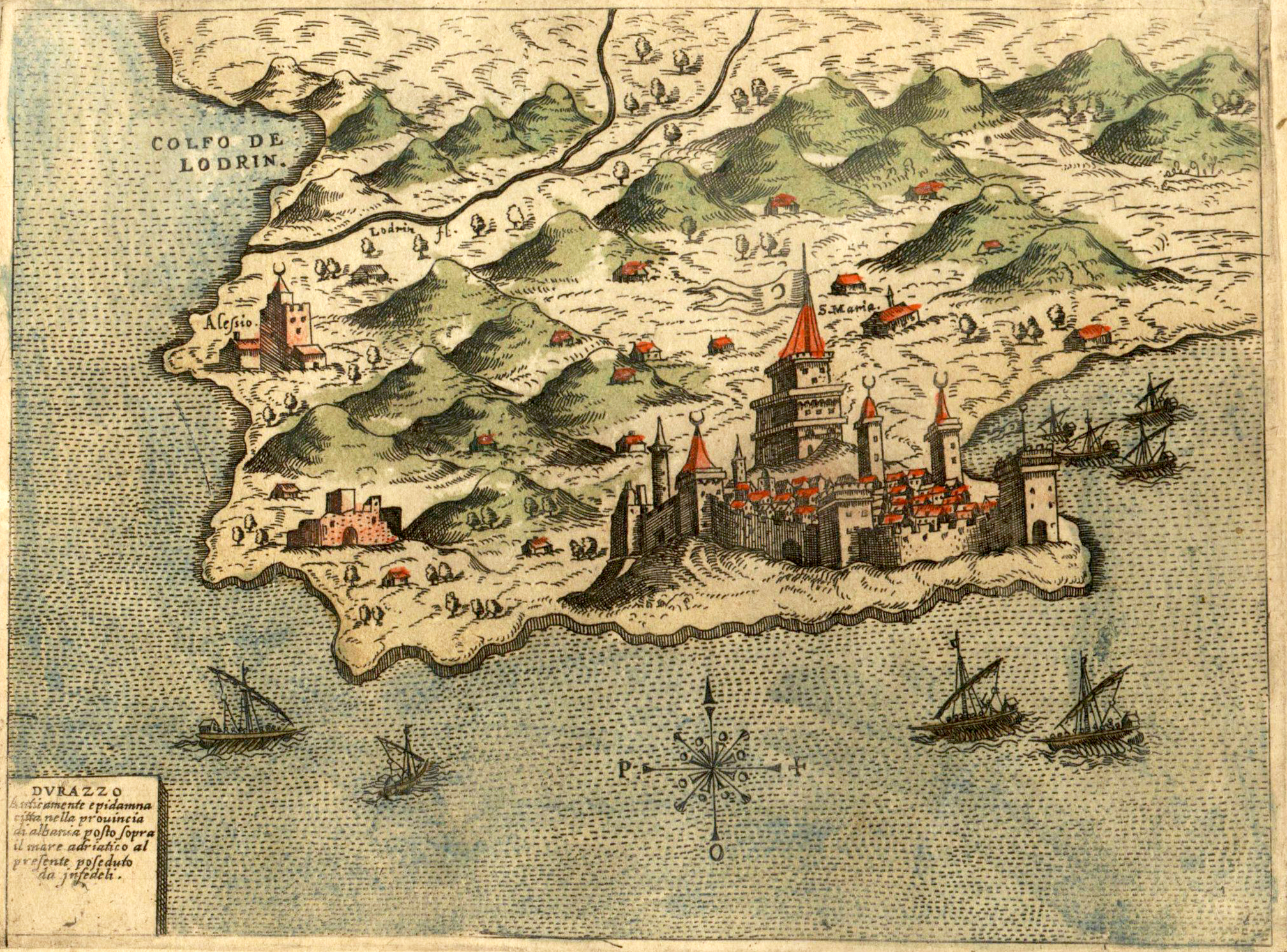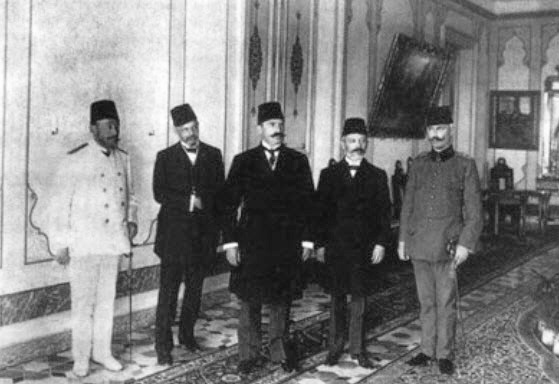|
Sanjak Of Durrës
The Sanjak of Durrës ( ota, سنجاق دراج, Sancağı-i Dıraç or Draç; al, Sanxhaku i Durrësit) also known in the west by the Italian form as the Sanjak of Durazzo, was one of the sanjaks of the Ottoman Empire. It was named after its county town Durrës. The sanjak was composed of the kazas of Durrës District, Durrës, Tirana District, Tirana, Shijak, Kavajë District, Kavajë, and Krujë District, Krujë. The Sanjak of Durrës was located in the southern part of the Scutari vilayet, Vilayet of Scutari and was one of its two constituent sanjaks. It bordered to the north the Sanjak of Scutari, Sanjak of Manastir, Manastir and Sanjak of Dibra, Dibra to the north-east, Sanjak of Elbasan, Elbasan to the east and south, and the Adriatic Sea to the west. Its terrain is generally flat and plain, and only the eastern parts of the kazas of Tirana and Kavajë are mountainous. The Durrës Castle, fortress of Durrës would be among the last castles in Albanian territory to fall int ... [...More Info...] [...Related Items...] OR: [Wikipedia] [Google] [Baidu] |
Sanjak
Sanjaks (liwāʾ) (plural form: alwiyāʾ) * Armenian language, Armenian: նահանգ (''nahang''; meaning "province") * Bulgarian language, Bulgarian: окръг (''okrǔg''; meaning "county", "province", or "region") * el, Διοίκησις (''dioikēsis'', meaning "province") or επαρχία (''eparchia'', meaning "eparchy") * lad, sancak , group=note (; ota, ; Modern Turkish: ''Sancak'', ) were administrative divisions of the Ottoman Empire. ''Sanjak'', and the variant spellings ''sandjak'', ''sanjaq'' and ''sinjaq'', are English language, English or French language, French transliterations of the Turkish language, Turkish word ''sancak'', meaning "district", "banner (country subdivision), banner" or "flag". Sanjaks were also called by the Arabic language, Arabic word for ''banner'' or ''flag'': ''Liwa (Arabic), liwa (Liwā or Liwā’)''. Ottoman provinces (eyalets, later vilayets) were divided into sanjaks (also called ''livas'') governed by sanjakbeys (also calle ... [...More Info...] [...Related Items...] OR: [Wikipedia] [Google] [Baidu] |
Adriatic Sea
The Adriatic Sea () is a body of water separating the Italian Peninsula from the Balkan Peninsula. The Adriatic is the northernmost arm of the Mediterranean Sea, extending from the Strait of Otranto (where it connects to the Ionian Sea) to the northwest and the Po Valley. The countries with coasts on the Adriatic are Albania, Bosnia and Herzegovina, Croatia, Italy, Montenegro, and Slovenia. The Adriatic contains more than 1,300 islands, mostly located along the Croatian part of its eastern coast. It is divided into three basins, the northern being the shallowest and the southern being the deepest, with a maximum depth of . The Otranto Sill, an underwater ridge, is located at the border between the Adriatic and Ionian Seas. The prevailing currents flow counterclockwise from the Strait of Otranto, along the eastern coast and back to the strait along the western (Italian) coast. Tidal movements in the Adriatic are slight, although larger amplitudes are known to occur occasi ... [...More Info...] [...Related Items...] OR: [Wikipedia] [Google] [Baidu] |
Member Of Parliament
A member of parliament (MP) is the representative in parliament of the people who live in their electoral district. In many countries with bicameral parliaments, this term refers only to members of the lower house since upper house members often have a different title. The terms congressman/congresswoman or deputy are equivalent terms used in other jurisdictions. The term parliamentarian is also sometimes used for members of parliament, but this may also be used to refer to unelected government officials with specific roles in a parliament and other expert advisers on parliamentary procedure such as the Senate Parliamentarian in the United States. The term is also used to the characteristic of performing the duties of a member of a legislature, for example: "The two party leaders often disagreed on issues, but both were excellent parliamentarians and cooperated to get many good things done." Members of parliament typically form parliamentary groups, sometimes called caucuse ... [...More Info...] [...Related Items...] OR: [Wikipedia] [Google] [Baidu] |
Toptani Family
The Toptani family was the leading Albanian noble family in central Ottoman Albania at the beginning of the 20th century. The Toptani family belonged to a small number of noble families appointed by the Ottomans who used local chieftains to control Ottoman Albania more easily. Essad Pasha Toptani, the head of the family at the beginning of the 20th century, claimed that the family descended from the Thopia family. According to some sources, the name is derived from the word ''top,'' which means cannon, as the family owned a cannon at a time when artillery was rare. Estates The Toptani family initially lived in Krujë before moving to Tirana during the 17th century, when many sipahis moved from rural regions of the Ottoman Empire to cities. Their move from Krujë to Tirana probably contributed to the development of sharecropping in Albania. The Toptani family possessed around 50,000 hectares near Tirana and Durrës and remained one of the main landowners until the end of the S ... [...More Info...] [...Related Items...] OR: [Wikipedia] [Google] [Baidu] |
Essad Pasha Toptani
Essad Pasha Toptani or Esad Pasha Toptani ( sq, Esad Pashë Toptani; 1863/4 or 1875 – 13 June 1920), mainly known as Essad Pasha, was an Ottoman army officer who served as the Albanian deputy in the Ottoman Parliament. He was a prominent politician in early 20th-century Albania. Toptani cooperated with the Balkan League after the Balkan Wars and established a state in central Albania, based in Durrës, called the Republic of Central Albania.Robert Elsie, ''Essad Pasha Toptani'' Biography Early life Essad Pasha was born in 1863 in , |
General Assembly Of The Ottoman Empire
The General Assembly ( tr, Meclis-i Umumî (French romanization: "Medjliss Oumoumi" ) or ''Genel Parlamento''; french: Assemblée Générale) was the first attempt at representative democracy by the imperial government of the Ottoman Empire. Also known as the Ottoman Parliament (french: Parlement Ottoman'' Legislation ottomane'' Volume 5: https://upload.wikimedia.org/wikipedia/commons/6/67/L%C3%A9gislation_ottomane_ou_Recueil_des_Aristarchi-Bey_Gr%C3%A9goire_Tome5.pdf p. 295 (PDF p. 299/370)), it was located in Constantinople (Istanbul) and was composed of two houses: an upper house (Senate, ''Meclis-i Âyân''), and a lower house (Chamber of Deputies, ''Meclis-i Mebusân''). The General Assembly was first constituted on 23 December 1876 and initially lasted until 14 February 1878, when it was dissolved by Sultan Abdul Hamid II. As a result of the Young Turk Revolution which brought substantial reforms and larger participation by political parties, the General Assembly was re ... [...More Info...] [...Related Items...] OR: [Wikipedia] [Google] [Baidu] |
Constitution Of The Ottoman Empire
The Constitution of the Ottoman Empire ( ota, قانون أساسي, Kānûn-ı Esâsî, lit= Basic law; french: Constitution ottomane), also known as the Constitution of 1876, was the first constitution of the Ottoman Empire. Written by members of the Young Ottomans, particularly Midhat Pasha, during the reign of Sultan Abdul Hamid II (1876–1909), the constitution was in effect from 1876 to 1878 in a period known as the First Constitutional Era, and from 1908 to 1922 in the Second Constitutional Era. After Abdul Hamid's political downfall in the 31 March Incident, the Constitution was amended to transfer more power from the sultan and the appointed Senate to the popularly-elected lower house: the Chamber of Deputies. In the course of their studies in Europe, some members of the new Ottoman elite concluded that the secret of Europe's success rested not only with its technical achievements but also with its political organizations. Moreover, the process of reform itself had imbu ... [...More Info...] [...Related Items...] OR: [Wikipedia] [Google] [Baidu] |
Young Turk Revolution
The Young Turk Revolution (July 1908) was a constitutionalist revolution in the Ottoman Empire. The Committee of Union and Progress (CUP), an organization of the Young Turks movement, forced Sultan Abdul Hamid II to restore the Ottoman Constitution and recall the parliament, which ushered in multi-party politics within the Empire. From the Young Turk Revolution to the Empire's end marks the Second Constitutional Era of the Ottoman Empire's history. More than three decades earlier, in 1876, constitutional monarchy had been established under Abdul Hamid during a period of time known as the First Constitutional Era, which lasted for only two years before Abdul Hamid suspended it and restored autocratic powers to himself. The revolution began with CUP member Ahmed Niyazi's flight into the Albanian highlands. He was soon joined by İsmail Enver and Eyub Sabri. They networked with local Albanians and utilized their connections within the Salonica based Third Army to instigate a ... [...More Info...] [...Related Items...] OR: [Wikipedia] [Google] [Baidu] |
Congress Of Berlin
The Congress of Berlin (13 June – 13 July 1878) was a diplomatic conference to reorganise the states in the Balkan Peninsula after the Russo-Turkish War of 1877–78, which had been won by Russia against the Ottoman Empire. Represented at the meeting were Europe's then six great powers: Russia, Great Britain, France, Austria-Hungary, Italy and Germany; the Ottomans; and four Balkan states: Greece, Serbia, Romania and Montenegro. The congress concluded with the signing of the Treaty of Berlin, replacing the preliminary Treaty of San Stefano that had been signed three months earlier. The leader of the congress, German Chancellor Otto von Bismarck, sought to stabilise the Balkans, reduce the role of the defeated Ottoman Empire in the region, and balance the distinct interests of Britain, Russia and Austria-Hungary. He also wanted to avoid domination of the Balkans by Russia or the formation of a Greater Bulgaria, and to keep Constantinople in Ottoman hands. Finally Bismarck ... [...More Info...] [...Related Items...] OR: [Wikipedia] [Google] [Baidu] |
Russo-Turkish War (1877–1878)
The Russo-Turkish War of 1877–1878 ( tr, 93 Harbi, lit=War of ’93, named for the year 1293 in the Islamic calendar; russian: Русско-турецкая война, Russko-turetskaya voyna, "Russian–Turkish war") was a conflict between the Ottoman Empire and a coalition led by the Russian Empire, and including Bulgaria, Romania, Serbia, and Montenegro. Fought in the Balkans and in the Caucasus, it originated in emerging 19th century Balkan nationalism. Additional factors included the Russian goals of recovering territorial losses endured during the Crimean War of 1853–56, re-establishing itself in the Black Sea and supporting the political movement attempting to free Balkan nations from the Ottoman Empire. The Russian-led coalition won the war, pushing the Ottomans back all the way to the gates of Constantinople, leading to the intervention of the western European great powers. As a result, Russia succeeded in claiming provinces in the Caucasus, namely Kars and Batum, a ... [...More Info...] [...Related Items...] OR: [Wikipedia] [Google] [Baidu] |
Pashalik Of Scutari
The Pashalik of Scutari, Iskodra, or Shkodra (1757–1831), was an autonomous and ''de facto'' independent '' pashalik'' created by the Albanian Bushati family from the previous Sanjak of Scutari, which was situated around the city of Shkodër in modern-day Albania and large majority of modern-day Montenegro. At its peak during the reign of Kara Mahmud Bushati the pashalik encompassed much of Albania, most of Kosovo, western Macedonia, southeastern Serbia and most of Montenegro. Up to 1830 the Pashalik of Shkodra controlled most of the above lands including Southern Montenegro. Background The weakening of Ottoman central authority and the ''timar'' system of land ownership brought anarchy to the Albanian-populated region of the Ottoman empire. In the late eighteenth century, two Albanian centers of power emerged: Shkodër, under the Bushati family; and Janina, under Ali Pasha of Tepelenë. Both regions cooperated with and defied the Sublime Porte as their interests re ... [...More Info...] [...Related Items...] OR: [Wikipedia] [Google] [Baidu] |



.jpg)




